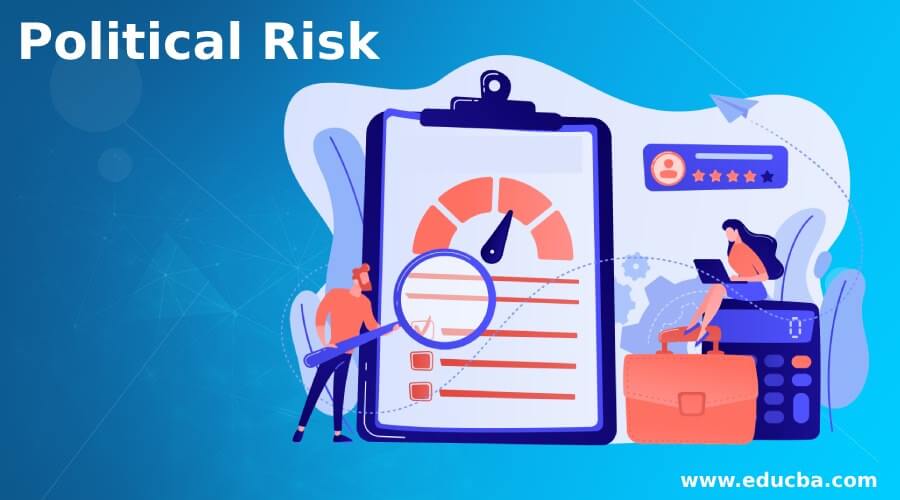Updated July 15, 2023

What is Political Risk?
The term “political risk” refers to the type of risk that corporations, investors, and governments face due to various political events, decisions, or conditions that eventually significantly impact the profitability of businesses.
Political risk also adversely impacts the expected value of any particular economic activity. However, if understood properly, these risks can be managed with reasonable foresight and well-planned investment.
Explanation of Political Risk
The political risks can drag down the investment returns of businesses or even result in a complete loss of the capital employed in the businesses. It is not an easy task to quantify risks as, in most cases, limited case studies or sample sizes need to understand an individual nation’s issue comprehensively. As such, various international agencies or other similar government bodies offer insurance against some of these political risks.
How to Manage Political Risk?
To manage any political risk, it is very important to understand the underlying risks and decide whether they are worth taking. Usually, corporations or investors retain a certain portion of the risks and hedge the remaining to maintain a diversified portfolio so that their overall investments are not affected by any specific political event. The investors manage the risks by hedging their investments against issues that may take place in the future. For instance, if the investors can sense political unrest in Nigeria, they might decide to purchase options for equity investment there. A well-planned hedging strategy can reduce the quantum of losses significantly by limiting the loss or creating gains elsewhere to compensate for the fall to some extent.
Examples of Political Risk
Let us look at real-life examples and how the companies skillfully managed them.
Example #1
In 2004, various environmental groups within Brazil gathered to stage large scale protests against the consortium of foreign companies headed by the US-owned Alcoa, who were planning to set up a hydroelectric power plant in Brazil. To control the protests, the consortium invested more money to compensate the people who were getting relocated and mitigate the expected environmental damages.
Example #2
The local people in the oil-rich region of Niger Delta (Nigeria) often launch attacks on the company compounds. They frequently abduct foreign oil workers and then demand that a larger portion of the oil revenue generated from the region should be spent on that same region. In order to manage the risks, the oil companies operating in this region usually hire security firms to protect workers and spend on local welfare, such as building schools & hospitals and creating jobs for locals.
Types of Political Risk
This can be classified into major types – macro-level risk and micro-level risk.
Macro-Level Risk: These risks affect all the participants in a given nation. Some common types of macro-level risks include regulatory changes, currency actions, endemic corruption, sovereign credit default, declaration of war, and changes in the composition of the ruling party. These events hinder portfolio investments and foreign direct investment risks, which can potentially change the business suitability of any region.
Micro-Level Risk: Besides macro-level risks, the companies must also pay attention to the stakes at the industry level and evaluate their contributions to the local economy. Typically, micro-level risks arise when the local governments favor local businesses more than the international organizations that operate there. Some common micro-level risks include project-specific government stance and nationalization of projects and assets.
Sources of Political Risk
In most industrialized nations, the government primarily acts as a regulator and facilitator for issues related to the environment, employment health & safety, consumers, etc. But sometimes, the government restricts business activities by imposing higher tariffs, trade quotas, corporate taxes, etc. Some scholars believe that government intervention of any kind is one of the major sources of political risk as it often results in a negative impact on the economy. Further, opposition political parties and other domestic stakeholders can also be linked to various risks.
Causes of Political Risk
Although there can be several causes for political risk, some of the main indicators that corporations and investors to look out for are as follows:
- A new trade agreement that affects the overall nation
- The steep increase in the unemployment rate resulted in civil unrest
- The rise of a new political party or an existing party gaining more power
Political Risk Factors
Some of the major factors contributing are as follows:
- Ideology: Any change in the doctrine of the ruling party results in a significant political and economic change in that country.
- Nationalism: It is an idiosyncrasy that is primarily witnessed among the local participants of developing nations, and at times it gives way to political unrest.
- Stability: The political stability of any nation is largely dependent on cultural diversity (in terms of language, race, and religion) and its acceptance among the people of the nation.
- International Relations: The sweetness in the relationship between countries can be instrumental or detrimental to the ease of business in a given country.
Importance of Political Risk
Typically, political risk directly impacts the operations of businesses and their profitability. Moreover, the effect of political risk is usually long-term in nature, and it increases over a period of time. As such, businesses and investors should evaluate and understand the potential of the political risks by scrutinizing national history, political establishments, and various political forces operating in the region.
Conclusion
So, it can be seen that political risk is an important aspect of international businesses. Although many companies face the brunt of political risk, some businesses get unique benefits out of it if the ruling government intends to improve the country’s economic situation through infrastructure building and job creation.
Recommended Articles
This is a guide to Political Risk. Here we also discuss the introduction and how to manage political risk. Along with types and examples. You may also have a look at the following articles to learn more –

